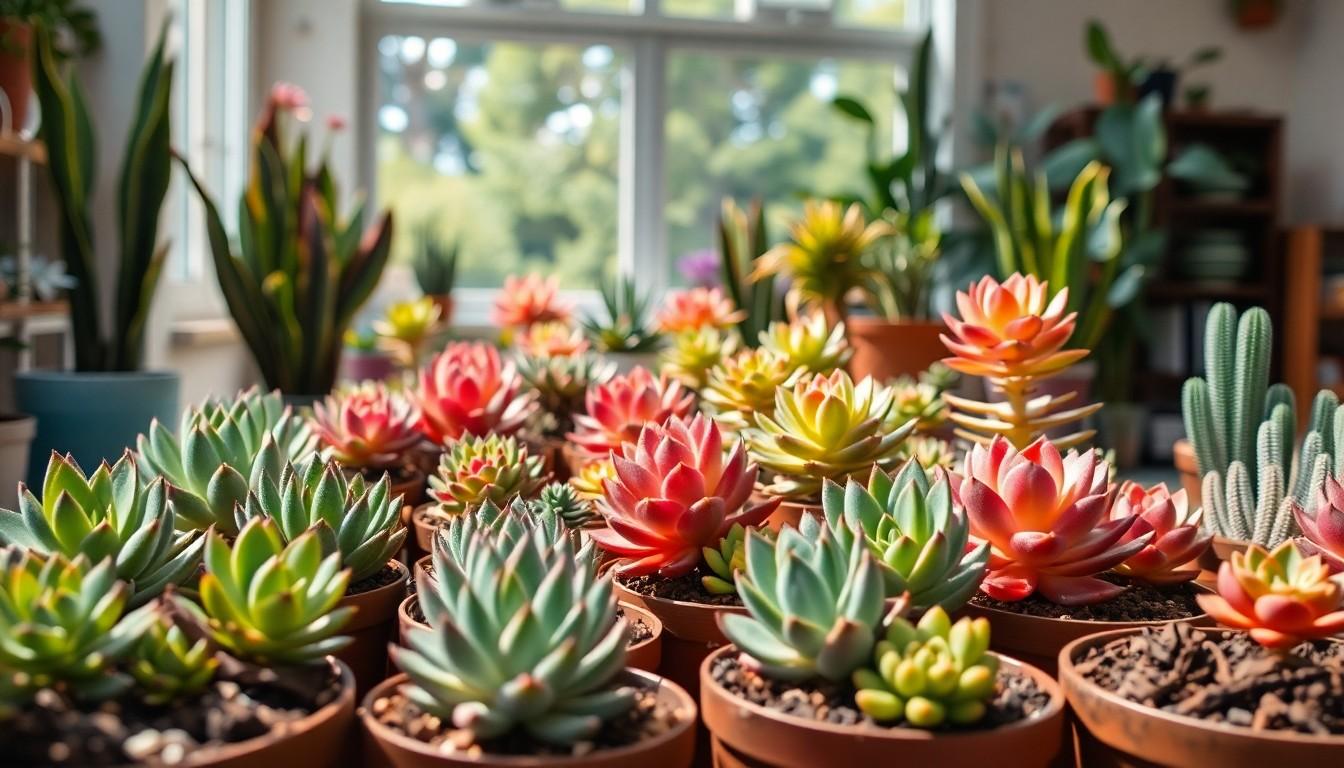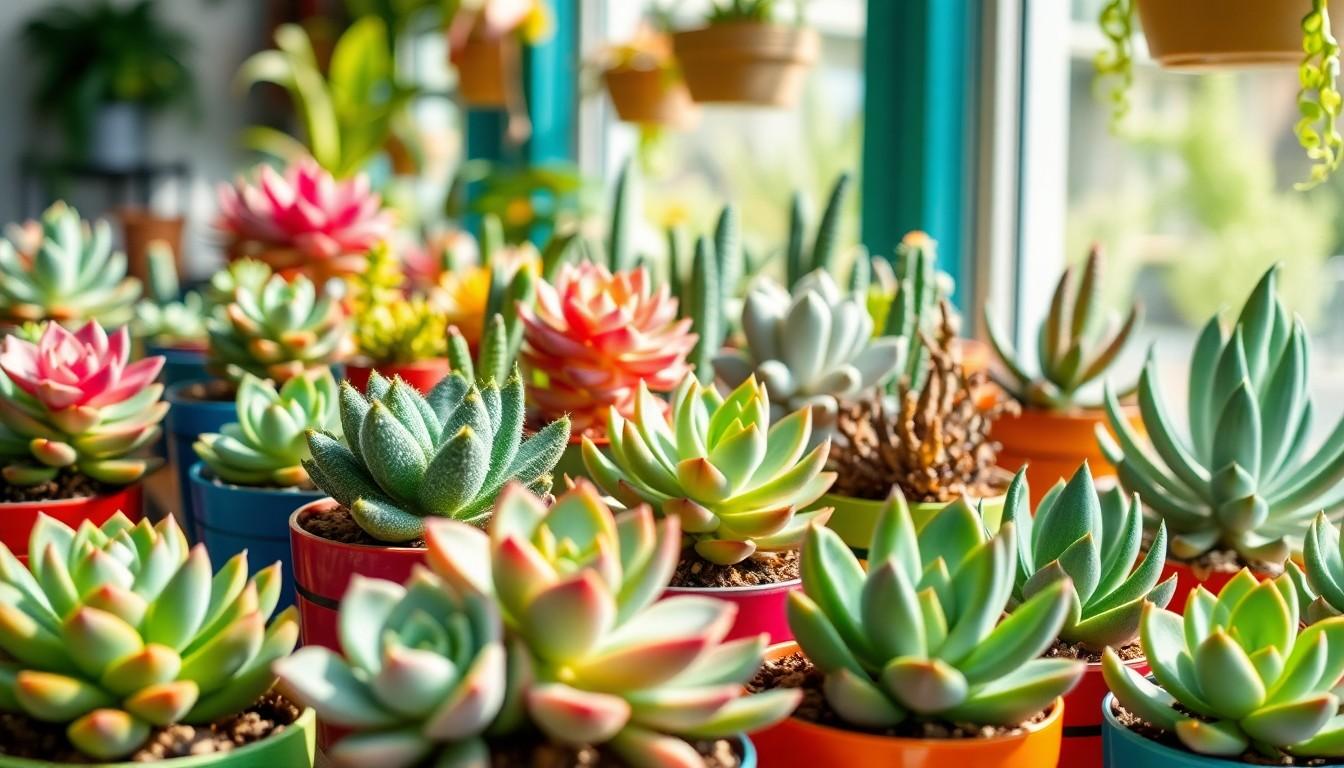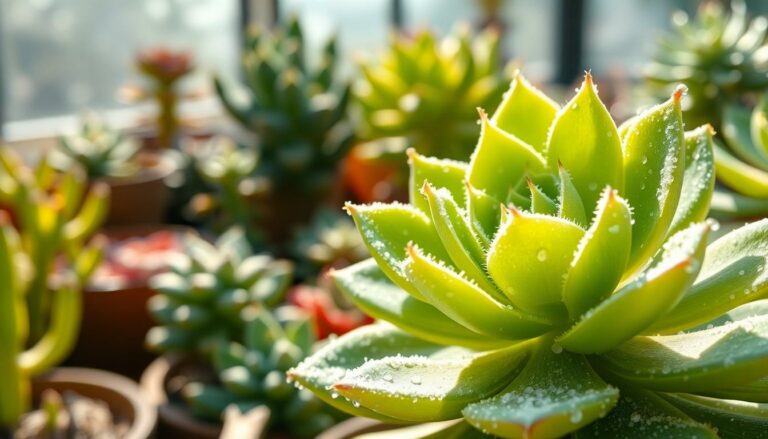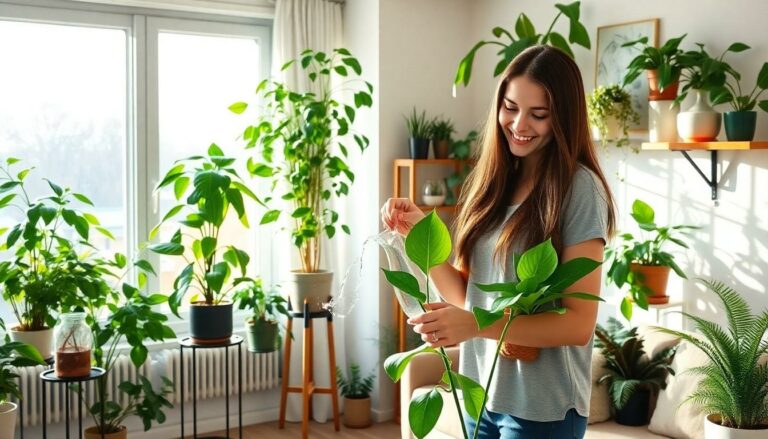Succulents are the low-maintenance darlings of the plant world, but even they have their quirks. If you’ve ever stared at your plump little cactus and wondered if it’s thirsty or just playing hard to get, you’re not alone. The right watering routine can mean the difference between a thriving plant and a sad, shriveled mess.
Understanding Succulents
Succulents are popular choices for both novices and experienced plant enthusiasts. Their unique characteristics and low-maintenance needs make them appealing additions to any space.
What Are Succulents?
Succulents are plants that store water in their leaves, stems, or roots. This adaptation allows them to thrive in arid environments. Various species, such as aloe vera and jade plants, showcase this ability. These plants come in a range of shapes, sizes, and colors, offering diverse options for indoor and outdoor settings.
Unique Characteristics of Succulents
Adaptability defines succulents. They require minimal water and thrive in well-draining soil. Their fleshy leaves often exhibit a waxy coating, which reduces moisture loss. Many succulents also grow in rosettes or clusters, enhancing their visual appeal. This group of plants often exhibits resilience against harsh conditions. They can recover from drought and overwatering with proper care.
Factors Affecting Watering Frequency

Understanding how climate, soil, and pot size influence watering needs enhances succulent care. These elements dictate the frequency of watering to maintain plant health.
Climate and Temperature
Climate plays a significant role in how often succulents require water. High temperatures typically lead to increased evaporation, necessitating more frequent watering. Conversely, cooler climates often reduce the need for water. Succulents grown outdoors might need more water during summer months, while indoor plants require less as indoor temperatures drop. Humidity also impacts watering frequency; dry air can cause succulents to lose moisture rapidly, leading to a quicker watering schedule.
Soil Type
Soil type directly affects moisture retention and drainage for succulents. Well-draining soil, such as cactus mix or sandy soil, allows excess water to escape, preventing root rot. This type of soil requires more frequent watering as it dries out quickly. In contrast, moisture-retentive soils may necessitate less watering since they hold water for longer periods. Regular monitoring of the soil moisture level is crucial, as it helps determine the appropriate watering frequency based on the type of soil utilized.
Pot Size and Drainage
Pot size significantly influences watering habits for succulents. Smaller pots contain less soil, which dries out faster than larger pots. A small pot may require more frequent watering to maintain moisture, while a larger pot needs watering less often due to increased soil volume. Additionally, proper drainage holes in pots are essential. These holes prevent water from accumulating, reducing the risk of overwatering and allowing succulents to thrive. Choosing the right pot size with effective drainage promotes healthy growth and optimal watering frequency.
General Watering Guidelines
Understanding when to water succulents involves recognizing their specific needs. Keeping a close eye on the plant allows for timely care.
Signs Your Succulent Needs Water
Look for signs indicating moisture deficiency. Dry, wrinkled leaves often signal that the plant requires water. Leaves that appear shriveled or shrunk suggest immediate attention. Another indicator is the color; pale or faded leaves can indicate stress from lack of hydration. Additionally, a decrease in firmness can mean it’s time to water. Monitoring these aspects helps maintain succulent health.
How to Water Succulents Properly
Watering succulents effectively involves several key steps. Use room temperature water to prevent shock, ensuring the roots adjust comfortably. Water thoroughly until it drains from the bottom of the pot, promoting even distribution in the soil. Allow excess water to escape completely, preventing root rot. Wait until the soil dries out before watering again, typically every two to three weeks. This method ensures succulents receive the moisture they need without being overwatered.
Seasonal Watering Adjustments
Understanding seasonal variations is vital for succulent care. Different seasons require distinct watering strategies to maintain optimal health.
Summer vs. Winter Needs
Summer presents higher temperatures and increased light, leading to more evaporation. Therefore, succulents typically demand more frequent watering, often every one to two weeks. In contrast, winter features cooler temperatures and reduced sunlight. During this time, watering frequency should decrease, usually extending to three to four weeks. Noticing changes in leaf texture can guide adjustments; in summer, healthy leaves feel plump, while in winter, they may appear slightly wrinkled.
Adjusting Based on Growth Cycles
Growth cycles significantly affect the watering needs of succulents. Most succulents experience active growth in spring and summer, so they require more water during these months. A careful approach ensures they receive adequate moisture, supporting thriving growth. Conversely, during fall and winter, succulents enter dormancy, reducing their water intake. Monitoring signs of moisture deficiency can help maintain balance, ensuring that they remain hydrated without becoming overwatered.
Common Mistakes to Avoid
Understanding the watering needs of succulents is critical for their health. Avoiding common mistakes ensures these plants thrive.
Overwatering Risks
Overwatering poses significant risks to succulents, often leading to root rot. Signs of excessive moisture include darkening leaves and a mushy stem. Succulents need well-draining soil to shed extra water. Choosing pots with drainage holes helps prevent stagnant water. Monitoring soil moisture levels is essential to determine when to water. Succulents generally thrive when the soil dries out completely between waterings. Checking the bottom of the pot for excess water ensures proper care. This approach significantly reduces the risk of overwatering.
Underwatering Symptoms
Underwatering presents its own set of challenges for succulent care. Succulents affected by insufficient water often exhibit dry, shriveled leaves. Leaves may also appear crispy, indicating a lack of moisture. Decreased firmness in the plant structure suggests urgent hydration needs. Waiting too long to water can lead to irreversible damage. Recognizing these symptoms early on allows for timely intervention. Adjusting the watering schedule based on environmental conditions aids in prevention. Regularly inspecting the plants helps identify the need for water before symptoms worsen.
Conclusion
Understanding how often to water succulents is key to their health and longevity. By considering factors like climate, soil type, and pot size, one can tailor a watering routine that suits each plant’s unique needs. Monitoring for signs of moisture deficiency and adjusting watering frequency with the seasons will help maintain the delicate balance required for optimal growth.
With the right care and attention, succulents can thrive and add beauty to any space. By avoiding common watering mistakes and providing proper drainage, these resilient plants will flourish, showcasing their vibrant colors and unique shapes for years to come.




